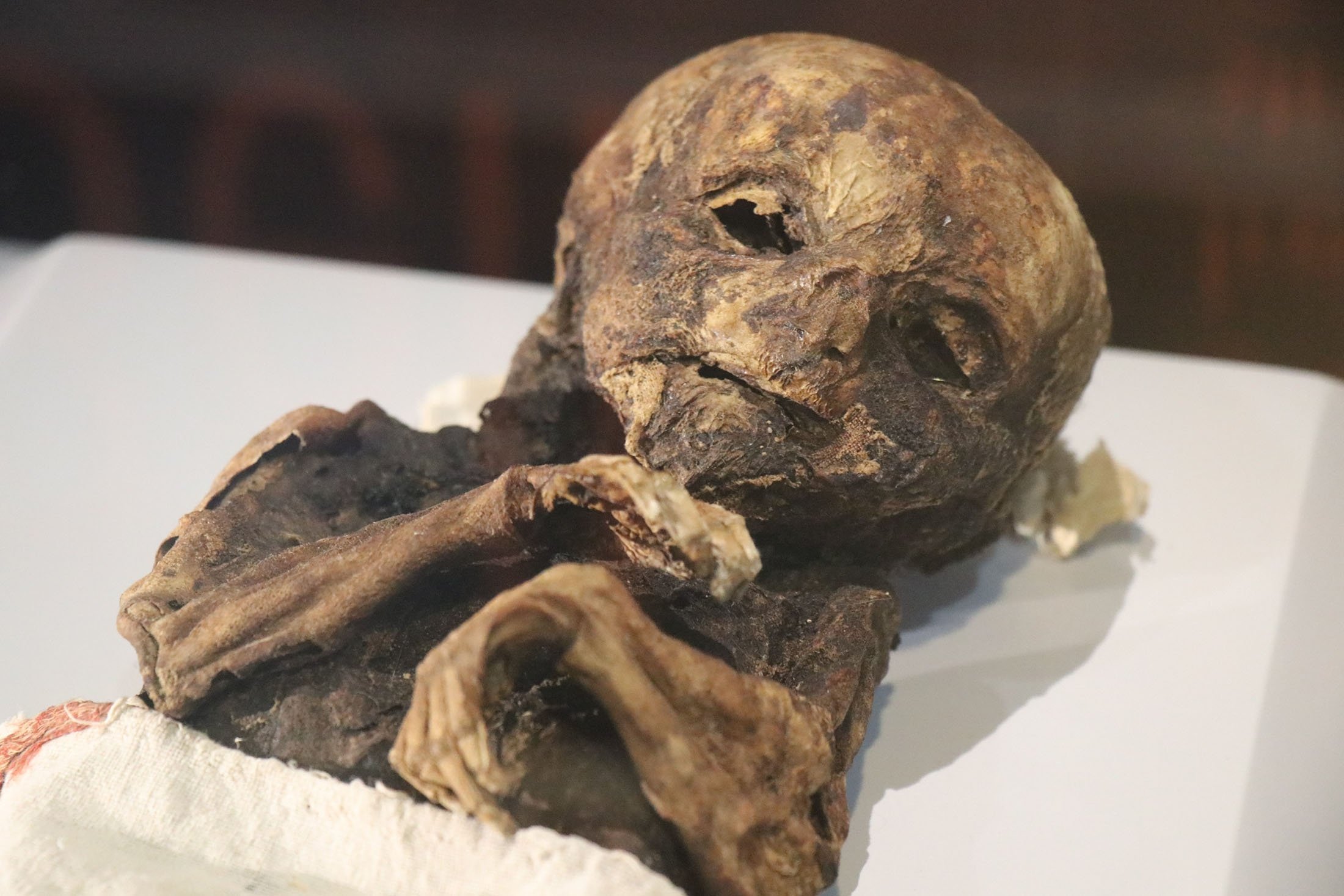The museum at Aksaray, the gateway of Turkey’s Cappadocia region to the West, holds a very special mummy section that displays as many as 13 local mummies to interested visitors. Astonishingly, apart from adult humans, the mummies include babies and even a cat, and are believed to be a thousand years old, reports Daily Sabah . It is, in fact, Turkey’s only museum with a mummy section.
“With 13 mummies in our Aksaray Museum, we are the only museum in Turkey with a mummy section. There is one mummy in each of the Amasya and Niğde Museums, but our museum has the only section exhibited in this way … in our country,” Yusuf Altin, the museum’s director is quoted as saying.

Aksaray’s fascinating 11,000-year-old historyAksaray’s history begins 11,000 years ago with the first Pre-Pottery period Neolithic settlement at Aşıklı Höyük around 8200 BC. Since then, Aksaray and its surroundings were continually inhabited till the Chalcolithic Age. The Hittites, with their empire centered on Hattusa in north-central Anatolia, controlled the Aksaray region from around 1600 BC to 1180 BC. Aksaray also saw Persian, Hellenistic, Roman, and Byzantine rule, reports Arkeonews.
Christianity began to spread in Anatolia the first century AD through the efforts of St Paul and his disciples in. Facing persecution from the Romans, Christians began to settle in more remote and safer places like the Aksaray region, which was also well-suited to priests seeking seclusion. Churches and houses were carved into the rocky slopes of the valleys.
The Arab-Byzantine wars between the seventh and 12th centuries saw a retreat of Christians to the Ihlara and Manastır Valley region. The remains of rock-cut houses, graves and churches can be seen along the slopes of the Ilhara Valley which became a prominent settlement for Byzantine Christians. Just 25 kilometers (15.5 miles) from the Ilhara Valley is the well-known site of Canli (bell) Church, so named after the church, which is a rare example of a masonry church in the Cappadocia region. The Canli Church is in fact a very fine specimen of Byzantine architecture.

The 13 Mummies of Aksaray MuseumThe 13 mummies on display in special temperature- and humidity-controlled cases in Aksaray Museum date from the 10th to the 12th century and were found in excavations in and around Aksaray. Many are from the Ilhara Valley, sometimes referred to as the “Valley of Mummies” and the Canli Church site. “All of our mummies are from the 10th, 11th and 12th centuries. So, they are almost a thousand years old,” Altin said according to Daily Sabah .
Although embalming the dead is commonly associated with ancient Egypt, it was practiced in several parts of the ancient world. Highlighting the pretty pervasive nature of the practice in the Aksaray region, Esra Cetin, an archaeologist from the Aksaray Museum is cited in a 2021 article in TRT World , “Mummifying the dead was a widespread ancient practice in the lands we now call Aksaray. Mummification can even be considered a well-known artform.”

In fact, the mummification process in Turkey was significantly different from the Egyptian one. Describing it, Altin said, as quoted by Arkeonews:
“Of these mummies, the baby mummy is very technical work in itself. Because the mummification technique in our country is different from the mummification technique in Egypt. In this technique, after the person dies, the internal organs of the corpse are removed, the wax is melted and the corpse is covered with a layer of glaze. Then it is covered with fabric and shroud. It is buried in the ground in this way and the corpse remains preserved for centuries after it dries. We bring our mummies from these excavations to our museum and exhibit them. In particular, we also exhibit the embroideries of necklaces, booties, and shrouds on them.”
A special attraction of the mummy section is the mummy of a cat, evidently much loved by its owner, that fascinates visitors, particularly children. According to Arkeonews, Altin said, “We have another mummy, the cat mummy, which especially attracts the attention of our children. Our cat mummy was covered with wax and preserved, probably because it was loved by its owner. So, we have been displaying it in our museum.
Aksaray Museum’s mummy section may not rival those in Egyptian Museums but there is plenty in it to captivate the interest of visitors. Apart from all else, it’s not every day that a cat lover of the Aksaray sort is to be encountered!





